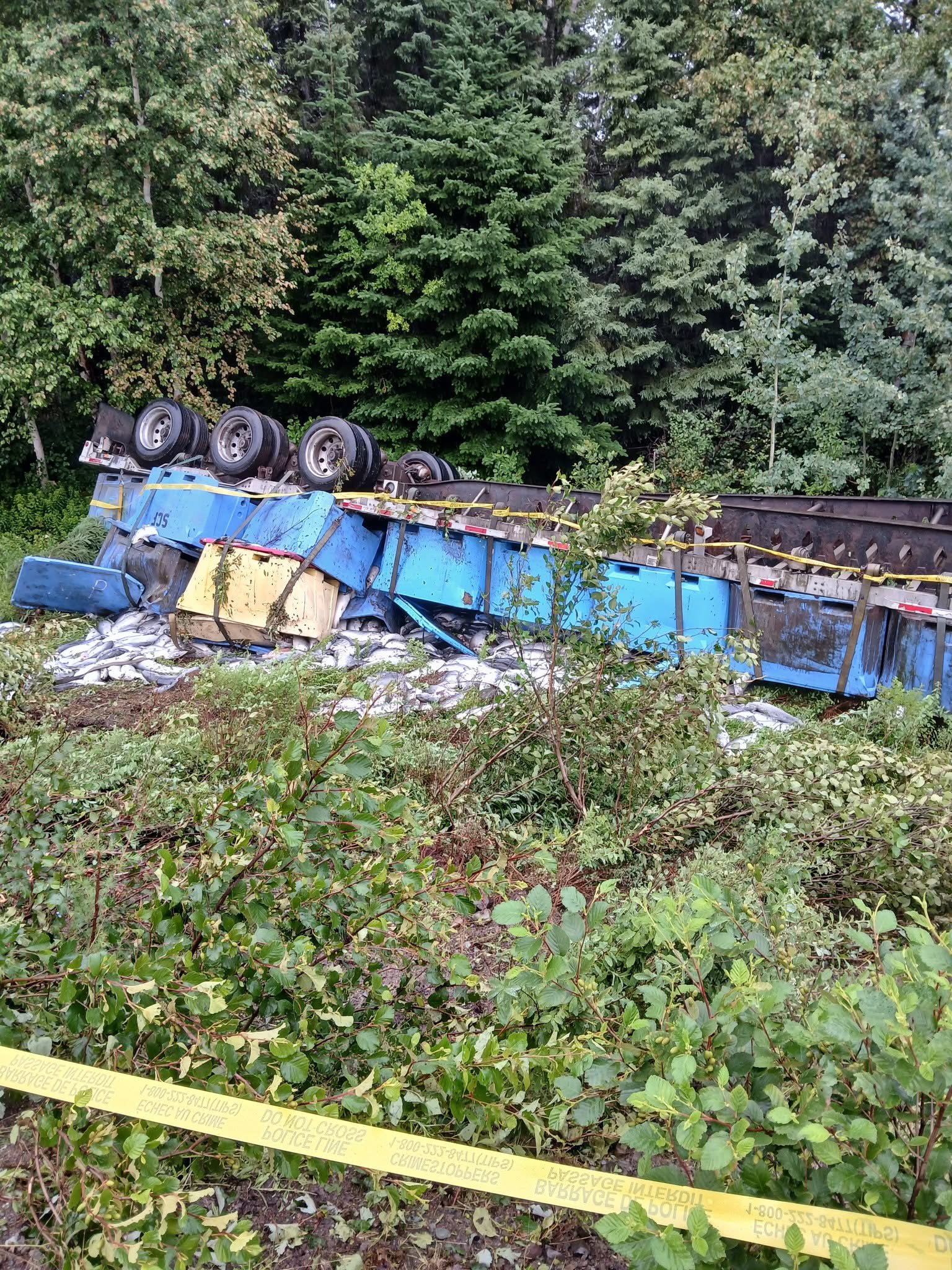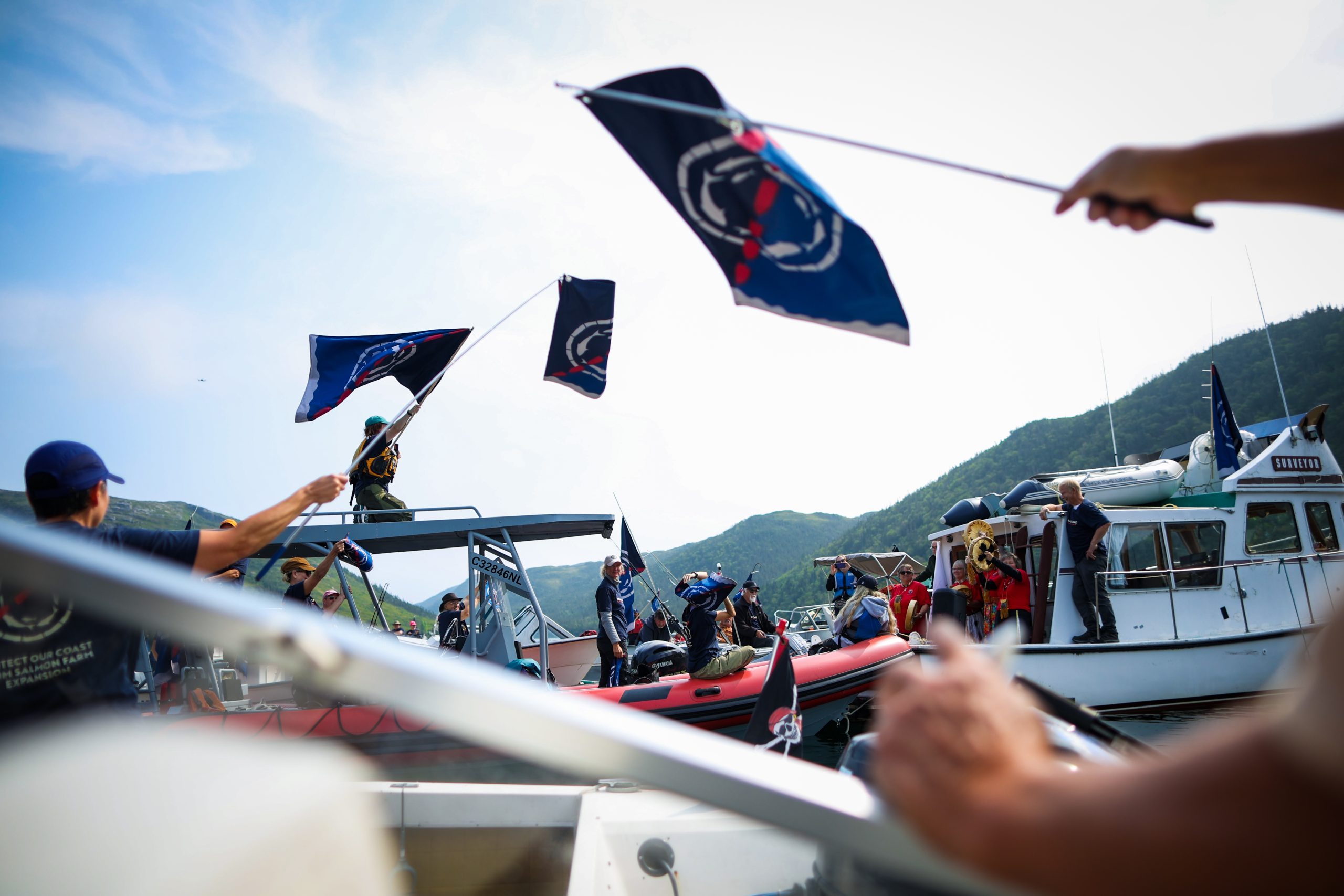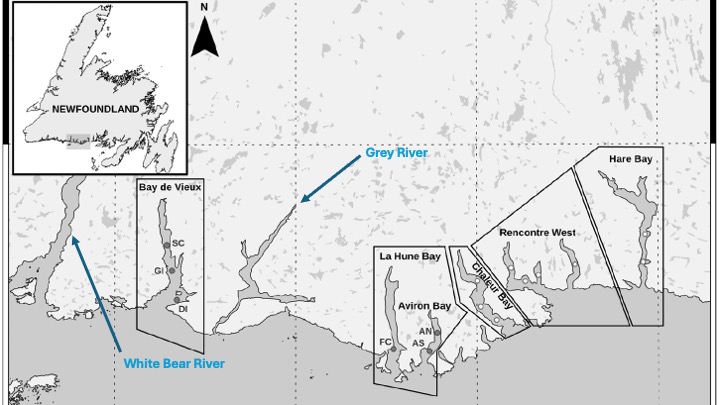
Subscribe & stay up-to-date with ASF
ASF’s position on sea-cage salmon farming in Atlantic Canada is clear: we are opposed to geographic expansion.
Since we posted our detailed argument last year, people in the industry and its political supporters have said a lot about ASF, but no one has publicly debated our points that expansion is unnecessary, unwarranted, and too risky.
ASF’s position is respectful of communities that benefit from the industry and places where people want something different. Keeping the industry within its established footprint takes nothing away and can achieve the win-win that politicians are looking for.
Please read on and consider our argument.

ASF’s opposition to expansion is focused on Newfoundland and Labrador, where companies are trying to grab up some of the last coastal water on the planet available for new salmon farms.
Mowi and Cermaq, two of the world’s largest producers, are betting on Newfoundland after the Government of Canada announced a ban on sea-cages in British Columbia that takes effect in 2029.
Mowi bought into Atlantic Canada in 2017 with the acquisition of Gray Aqua Group and Northern Harvest – two New Brunswick-based companies with licenses and infrastructure in Newfoundland. The company has grown its holdings to 52-licenses in the province and is in the final stage of environmental assessment for a major expansion.
Cermaq, a subsidiary of Mitsubishi Corporation, recently spent CAD $1.38 billion to buy Grieg’s salmon farming assets around the world, including in Newfoundland. Grieg had 14-licenses, all in Placentia Bay, and won the right to explore the western portion of the island’s south coast for new sites in a huge area from Grey River to Port aux Basques.
Any day, Newfoundland and Labrador’s Minister of Environment and Climate Change, Scott Reid, will decide if Mowi’s proposal to add 2.2 million more salmon to its farms, including stocking six new sites in undeveloped fjords, meets provincial requirements.

The idea of maintaining the established footprint of the salmon farming industry has significant public support.
On August 10th, 30 boats from the communities of Burgeo and Ramea, with more than 100-people on board, met in Bay de Loup, one of the fjords eyed by Cermaq for expansion. Participants delivered the message that not every bay should be turned over to salmon farms.
During the environmental assessment of Mowi’s proposed expansion, more than 5,800 people used a form created by ASF to submit comments of concern about the project, including 1,500 from people with Newfoundland and Labrador postal codes.
In June, ASF premiered the short documentary Rock | Plastic | Salmon, about the ongoing salmon farm plastic dumping scandal in Newfoundland. Screenings in Burgeo, Ramea, Woody Point, Corner Brook, and St, John’s attracted 580 attendees. On YouTube, the film has been watched over 10,000 times in the six weeks since its release.
ASF believes that conservation must be for people, not from people. Public support helps ensure we stay aligned with communities and true to our principles. Thank you to everyone who has added their voice!

Since posting our detailed argument against expansion last year, our case has grown stronger.
In July, we released the findings of a satellite image survey of all 106 licensed fish farm sites in Newfoundland. Analysis showed 53, fully half, of those sites did not have any equipment present during the last five years.
With half the already approved sites not in use, it’s reasonable to conclude companies have enough space to meet their production targets, near existing wharves and a trained workforce.
Recent months have also made it apparent companies still don’t have solutions to their chronic problems.
Between July 22 and July 31, mass mortalities were reported by companies at four Newfoundland sites, three leased to Cooke Aquaculture and one to Mowi. At least 754,000 farmed salmon died from warm water and sea lice in these incidents.
The latest die off follows a disturbing global pattern that is particularly acute in Newfoundland and Labrador.
The uncovering of a multi-decade plastic dumping scandal by salmon farming companies is another example that expansion is unwarranted. The same satellite survey that showed half the fish farming sites in the province are abandoned revealed the extent and persistence of discarded and abandoned salmon farming equipment at multiple sites in Newfoundland.
As late as June, the mess still had not been cleaned up, despite an order from the provincial government in January.
Salmon farming companies rely on leasing public water. It’s a benefit worth billions and acquiring new sites should be a reward for good performance, not poor results and violations.

In a sleight of hand that undermines conservation efforts and confidence in government, the Province of Newfoundland and Labrador issued Mowi six new salmon farming licenses in the summer of 2024, less than a year after the company applied for them, in the middle of an ongoing environmental assessment.
The approval process outpaced the publication of critical scientific information about the sites. License applications trigger a Fisheries and Oceans Canada-led risk assessment – which in this case was published in November 2024, months after the licenses were issued.
It predicts that the number of escapes from these new sites will negatively affect the abundance and genetic characteristics of wild Atlantic salmon in the region, particularly in Grey River and White Bear River, two large, wild salmon strongholds in the region.
For an overview of how salmon farming affects wild fish and the environment, visit www.salmon.info – a new website from ASF and the North Atlantic Salmon Fund that draws on more than 300-peer reviewed studies and reports.
Farmed salmon production in Newfoundland has been stagnant or declining for close to a decade, serious animal disease like infectious salmon anemia is being detected more frequently, and mass die offs are leaving workers laid off.
Still, provincial and federal leaders seem fixated on sunk costs. Governments have made unfulfilled promises about jobs and wealth. Federal and provincial leaders have invested untold millions in grants and low-interest loans to salmon farming companies and industry associations. Whole bureaucracies have grown up to support the industry.
Companies desperate for more real estate have convinced politicians that new sites in new fjords is the only way to make good on all the financial and political capital expended.
The old adage that when you’re in a hole, stop digging, should be applied instead. No expansion doesn’t mean no industry. It’s a call for fresh thinking and accountability from companies.
ASF stands ready to work with industry and government to optimize existing licenses and improve oversight within the established footprint of the industry. The win-win looks like this: a modern salmon farming industry and places where wild fish and fisheries get the same level of attention and investment.